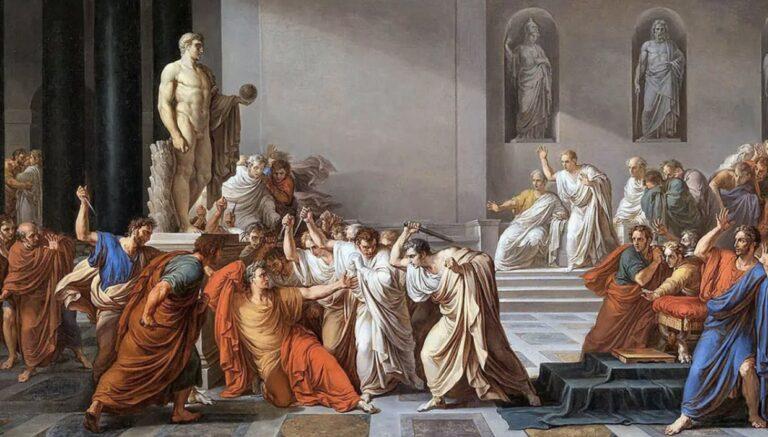Alger Hiss, a former U.S. State Department official, is a name that continues to evoke debates and discussions about Cold War espionage and political intrigue. His case, which unfolded during a time of intense ideological conflict between the United States and the Soviet Union, remains a controversial episode in American history, raising questions about loyalty, justice, and the blurry lines between patriotism and espionage.
Born on November 11, 1904, Alger Hiss enjoyed a privileged upbringing in Baltimore, Maryland. He attended Harvard Law School, and his career path eventually led him to the U.S. State Department. Hiss’s intelligence, education, and eloquence propelled him through the ranks of government service. He was known for his involvement in international relations, particularly during the drafting of the United Nations Charter in 1945.
The controversy surrounding Alger Hiss began in 1948 when Whittaker Chambers, a former Communist and Time magazine editor, accused Hiss of being a Soviet spy. Chambers claimed that Hiss had been a member of an underground Communist cell in the 1930s and had provided classified documents to the Soviet Union. The allegations sent shockwaves through American society and fueled the growing fear of Communist infiltration.
The Trials:
The legal battle that followed captivated the nation. In 1949, Hiss was indicted on charges of perjury for denying under oath that he had passed classified documents to Chambers. The trial ended in a hung jury, with some jurors believing Hiss was guilty and others unconvinced.
A second trial took place in 1950, resulting in Hiss’s conviction on two counts of perjury. He was sentenced to five years in prison. The trials themselves were characterized by dramatic testimonies and heated debates over the authenticity of typewritten documents that Chambers alleged had been provided by Hiss.

The central issue of the trial was espionage. In August 1948, Whittaker Chambers—a senior editor at Time magazine—was called by the House Committee on Un-American Activities to corroborate the testimony of Elizabeth Bentley, a Soviet spy who had defected in 1945 and accused dozens of members of the U.S. government of espionage. One official she named as possibly connected to the Soviets was Alger Hiss.
The FBI immediately began probing her claims to ensure those who were credibly named—including Hiss—did not continue to have access to government secrets or power. As the investigation into Bentley and related matters deepened in 1946 and 1947, Congress became aware of and concerned about the case. Details leaked to the press, and the investigation became national news and embroiled in partisan politics in the run up to the 1948 presidential election.
Chambers, who had renounced the Communist Party in the late 1930s, testified reluctantly that hot summer day. He ultimately acknowledged he was part of the communist underground in the 1930s and that Hiss and others had been members of the group.
In later testimony, Hiss vehemently denied the accusation. After all, Chambers had offered no proof that Hiss had committed espionage or been previously connected to Bentley or the communist group.
It could have ended there, but members of the committee—especially then-California Congressman Richard Nixon—prodded Chambers into disclosing information suggesting there was more to his story and his relationship with Hiss. In later testimony, Hiss admitted knowing Chambers in the 1930s, but he continued to deny any ties to communism and later filed a libel suit against his accuser.
The committee was torn. Who was telling the truth, Hiss or Chambers? And should either be charged with perjury?
A key turn of events came in November 1948, when Chambers produced documents showing both he and Hiss were committing espionage. Then, in early December, Chambers provided the committee with a package of microfilm and other information he had hidden inside a pumpkin on his Maryland farm. The two revelations, which became known as the “Pumpkin Papers,” contained images of State Department materials—including notes in Hiss’ own handwriting.
It was the smoking gun the Justice Department needed. Hiss was charged with perjury; he could not be indicted for espionage because the statute of limitations had run out. An extensive FBI investigation helped develop a great deal of evidence verifying Chambers’ statements and revealing Hiss’ cover-ups.
In 1949, the first trial resulted in a hung jury, but in 1950, Hiss was convicted. On January 21, 1950, he was sentenced to five years in prison, ending an important case that helped further confirm the increasing penetration of the U.S. government by the Soviets during the Cold War.
The Alger Hiss case had profound implications for American society and politics. It highlighted the paranoia and anxiety that permeated the United States during the height of the Cold War. The Red Scare, characterized by the fear of Communist infiltration and the subsequent hunt for suspected spies, led to the blacklisting of individuals in the entertainment industry, academia, and government.
Hiss’s case also exposed divisions among Americans. While some saw him as a victim of political witch hunts, others believed his conviction was a necessary step to protect national security.
Conclusion:
The Alger Hiss case remains an enigma in American history, a puzzle with pieces that continue to shift even decades later. Whether he was a dedicated public servant wrongfully accused or a skilled operative who managed to evade definitive proof of his guilt, Alger Hiss’s legacy serves as a reminder of the complex interplay between ideology, loyalty, and the pursuit of justice in times of turmoil. It underscores the challenges of uncovering the truth in an environment where political motivations and personal biases can blur the lines of certainty.




My question is... did the chief have anything to gain by this act from his "Princess Warrior" wife? These two…
Whats going on with the CC Distillery? Are they closed? Editor's Note: Rumor has it they are closing, due to…
Now that is Hilarious! Waiting!!
Dang, only one comment on rant&rave in two years.....? Why not rename it for Ms. Panik A. Tack? That would…
Oooooh....so scary...so belligerent ...so angry....slinging vitriol while hiding behind a pseudonym!..... I have no dog in this fight...my interactions with…